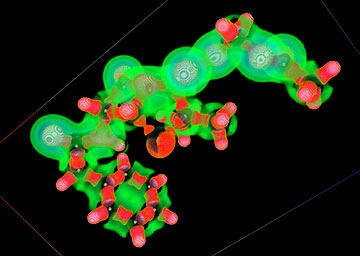 by Preston MacDougall June 06, 2007
The perpetrator was an Atlanta lawyer who snuck across the Canada/U.S. border in rural upstate New York, even though his name was on a Department of Homeland Security watch list. Unlike the "millennium bomber", who hid bombs made with nitroglycerin in the trunk of his car and was caught in 1999 near Seattle, in the current situation the "weapons" were inside the carrier's lungs. And they weren't chemical explosives, but biological pathogens - extremely drug-resistant tuberculosis bacteria.
The carrier is now a patient in federally enforced "respiratory isolation", a strict form of quarantine not enacted for over 40 years. It sounds pretty scary, and I hope Lou Dobbs gets his facts straight before he covers this medical story. To be sure, I have no doubt that the patient is frightened for his life, and this probably explains his clandestine entry back into the country. I would be frightened if I were in his hospital slippers. But I'm me, and even though I was exposed to tuberculosis this time last year, I'm not the least bit frightened for my life now, nor was I then. You may be wondering "What's the difference?" The difference is chemistry. At the beginning of the 20th century, about one in seven North Americans died of tuberculosis, or TB. TB had long been grouped with other wasting diseases, and called "consumption", before biologists identified the contagious bacteria that causes the disease, and gave it its name. There are different varieties of tuberculosis bacteria, and they continue to evolve as all organisms do. Our immune system has built defenses against the disease, and many people are carriers of the bacteria but don't show any symptoms, such as the persistent coughing. Other varieties do cause illness, but illness that can be cured by antibiotics. Many antibiotics do their job by mimicking the biomolecular building blocks that bacteria use to build their own "cell walls", thus interrupting the life cycle of the bacteria instead of the patient. These drugs were developed in the 50's, and their molecular design continues to evolve, as most synthetic materials do. And not just because pharmaceutical patents run out. Chemists strive to solve problems at the molecular level, and bacterial resistance is one such problem. Still other varieties of TB bacteria are resistant to multiple antibiotic drugs. Thankfully these are few in number and rare in occurrence. Somehow, they have either developed ways to detect and neutralize our drugs, or evolved new biochemical construction pathways that evade our molecular weapons. Thankfully molecular biologists and medicinal chemists are working together to win this "molecular arms race". But their numbers may dwindle as more lucrative careers, such as business and law, attract greater numbers of college students, and Lou Dobbs rails against importing skilled researchers on H1-B work visas as "war on the middle class". Where was I? Oh yes, TB. At this time last year, I had a voice mail message asking me to call a nurse with the county department of health. There are about 280 active cases of TB in Tennessee, and apparently one of them was in a chemistry class that I taught. This person carried a form of TB that was susceptible to commonly used drugs, and was being treated successfully. Not only did I not notice any symptoms, but neither did the patient and they stopped taking their medication. Prematurely it turned out, because the bacteria showed up during the student's next check-up. They were asked to give a list of recent close contacts, and my name was given, presumably because of after-class help sessions I often give students. In any case, the health department nurse said that I should get a TB skin test, which tests to see if my immune system recognizes harmless chemical derivatives of purified proteins that are common to all known TB bacteria. My skin would have "bubbled" if I had a positive immune response. It didn't. Even if it had, and lung X-rays had shown spots of growing TB bacteria, antibiotics would have completely cured me, as they have since cured the student. Before synthetic antibiotics, people weren't so lucky. The first wife of Nobel Prize-winning physicist Richard Feynman died of tuberculosis in New Mexico while he was working on the Manhattan Project at Los Alamos. They were young lovebirds, and this bittersweet story is among the thought-provoking anecdotes in "What do you care what other people think?". Throughout the book, and others like it, Feynman tries to teach non-scientists how the scientific attitude can be applied to almost any problem. So, if a health official tells you that you should take all your medications, or that you should get a TB skin test, or that you should not travel overseas, listen to them. You may not care what other people think, but you should care what they breathe.
On the Web:
E-mail your letters & opinions to editor@sitnews.us SitNews ©2007 Stories In The News Ketchikan, Alaska |
||
